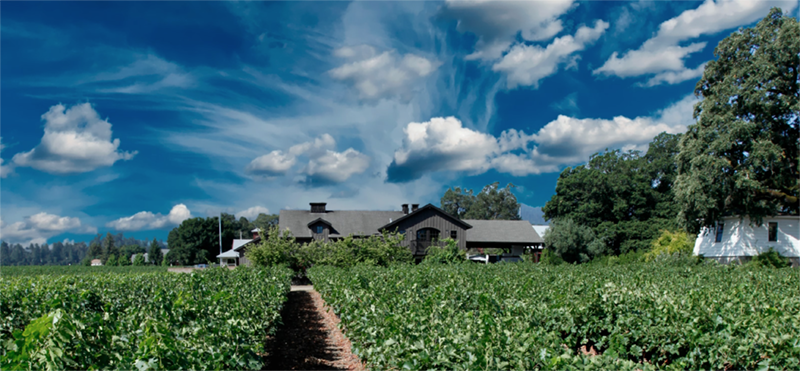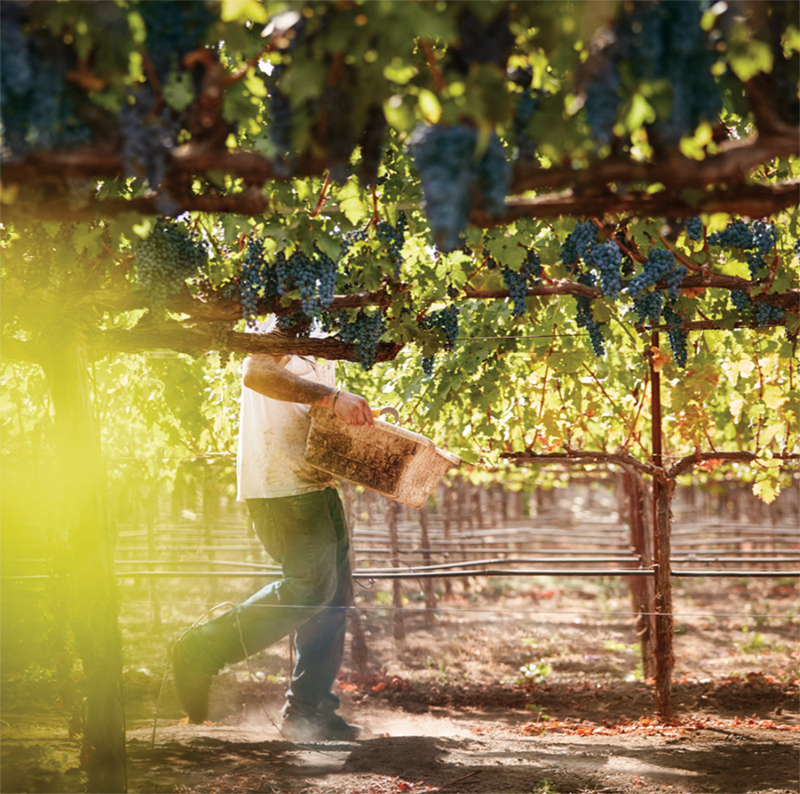Few California wine regions experience major variability in weather from year to year. That’s a function of the moderate Mediterranean climate the coastal AVAs have. Napa Valley is a prime example. However, there is still some variation between vintages which can produce meaningful differences in the wines’ characters.
Last week, I participated in the annual Vintage Perspective Tasting put on by the Napa Valley Vintners. It includes three Cabernet Sauvignon wines from each of 15 different producers. Included are the current release, the previous release, and the vintage to be released the following year. This time, the vintages were 2015, 2016, and 2017.
The tasting is always blind. Attendees know which vintage they are tasting at any given moment, but don’t know any of the producers until having gone through all the wines. Several of the wines are single-AVA productions, highlighting different parts of the valley. Others are blends from multiple AVAs.
These tastings are a great way to get a sense for the character of each vintage as represented by the wines. It also shows how the wines evolve in their youth and when their ideal drinking windows might be.
Vintage Overviews
2015 in Napa Valley
Vines got off to an early start, due to unusually warm weather during winter and the first part of spring. Temperatures dropped substantially in May. That affected development of grape bunches, leading to much lower yields than in the previous three years. But temperatures soon rose again and remained warm for the duration. The combination of low crop-load and warmth led to a very early harvest.
2016 in Napa Valley
2016 was a no-drama vintage for growers. The start was early, but temperatures were very moderate most of the year. There was no impactful rain and the grapes enjoyed a long, consistent growing season. This allowed gradual and consistent ripening with phenolics and sugar content developing in synch.
2017 in Napa Valley
The weather this vintage was uneventful, save for a hot spell around Labor Day. All was going well and, by October 8, 90% of all grapes had been harvested. Then came the massive and long-lasting fires. Fruit still on the vine was rapidly picked, if possible. On a percentage basis, more Cabernet Sauvignon and other robust red varieties were affected, as grapes which ripen earlier had been harvested well before. A few vineyards lost all their fruit, others just a portion, and still others none at all.
I’ve tasted many 2017s intended for commercial release. None of them have showed any sign of smoke taint. Quality and brand reputation are simply too important in Napa Valley to mess around with subpar wine. Wineries reduced their volumes as needed to maintain quality. A small number didn’t bottle 2017 Cabernet at all.
The Tasting
I found the general style of each vintage to be remarkably consistent between producers. There were few outliers and they were producer-specific (house style). The least consistent vintage stylistically was 2017. I attribute that to two factors: the youth of the wines and the fires’ effect on harvest date, grape supply, and, to some extent winemaking approach.
 Volker Eisele Family Estate has been farming their grapes organically since 1974.
Volker Eisele Family Estate has been farming their grapes organically since 1974.
2015 Napa Valley Cabernet Sauvignon
Of the three vintages, 2015 is the most consistently fruit-driven. The warm, early vintage with low yields delivered ripe fruit with soft tannins. Of course, having an extra year to mature in bottle will have also softened tannins and allowed the wine to come together.
Do not, however, take fruit-driven and soft to mean the wines are in any way overly fruity and rich or unbalanced. On the contrary, they were quite well-balanced on the whole. Some were fine-boned. A couple were absolutely gorgeous.
The two wines that really knocked my socks off were Turnbull Wine Cellars Cabernet Sauvignon Oakville Reserve and Volker Eisele Family Estate Cabernet Sauvignon (Chiles Valley AVA). Hot on their qualitative heels was Wallis Family Estate Cabernet Sauvignon Diamond Mountain District. Those are three very different growing areas and the wines they produced were distinctive, but united by their exceptional quality and the factors I mentioned above: balance, fruit-driven flavors and soft tannins.
The lowest scoring 2015s for me were still quite good. And each of them suffered only because they are still too young. They tended to come from areas known for robust structure and were too tannic to show their full potential in a quick tasting right now.
2016 Napa Valley Cabernet Sauvignon
The wines of 2016 are markedly more savory than those of 2015, due to the cooler season. They are also consistently complex, balanced and delicious. Their tasty fruit is complemented by, and sometimes takes a backseat to, wonderful notes of earth, dried bay leaf, and mineral. These wines are drinking very well already, but are also extremely suitable for long-term aging. Given the beauty of 2016 and the light volumes of 2015 and 2017, Cabernet lovers should load up on 2016.
As to specific wines, Wallis and Volker Eisele were again superb. [Volker Eisele also had one of my very favorite Premiere Auction lots and deserves more recognition than it gets.] Salvestrin of St. Helena was equally great. Not far behind were Pellet Estate (also St. Helena), Raymond District Cabernet Sauvignon from Rutherford, and both Tor Tierra Roja Vineyard and Yount Ridge from Oakville.
 The Salvestrin family is in their fifth generation of Napa Valley viticulture.
The Salvestrin family is in their fifth generation of Napa Valley viticulture.
2017 Napa Valley Cabernet Sauvignon
The relative inconsistency of the 2017 wines relates only to their character, not their quality. The wines are very, very good. My notes for virtually every wine mentions excellent balance. And the scores are consistently high. In fact, of the three vintages, 2017 shows the least disparity in my scoring.
I saw most of the 2017 wines as being in a stylistic middle zone between the other two vintages. 2017 is less fruity and more structured than 2015, but less savory than 2016.
I have run into a lot of consumers who are under the assumption that 2017 is a Napa vintage to avoid. They’re totally wrong. And, with the small case counts for some producers, that can work to your advantage. We can let those who have unfairly stereotyped then vintage buy something else next year, while we’re snapping up the 2017s from Napa.
 Turnbull, located on Highway 29 in Napa Valley, has been receiving very high scores in recent years.
Turnbull, located on Highway 29 in Napa Valley, has been receiving very high scores in recent years.
Selected 2016 and 2015 Napa Valley Cabernet Sauvignon in stock now at JJ Buckley
2016 Turnbull Cabernet Sauvignon Oakville Reserve - Wonderful, savory, age-worthy Cabernet Sauvignon and a killer value
2016 Tor Kenward Family Vineyards Oakville Hillside Cabernet Sauvignon - Not the same wine mentioned above, but equally good
2016 Eisele Vineyard Cabernet Sauvignon - Not to be confused with Volker Eisele which is in Chiles Valley, Eisele Vineyard used to be known as Araujo Estate. It's phenomenal wine in any vintage.
2016 Shafer Vineyards Cabernet Sauvignon One Point Five - 100% Cabernet Sauvignon from Shafer's stellar vineyards in Stags Leap District
2015 Chateau Montelena Cabernet Sauvignon Estate - Another great value, the Estate Cabernet Sauvignon from Chateau Montelena is always excellent and can age for 20 years.
2015 Philip Togni Cabernet Sauvignon - Even in a ripe year, Philip Togni brings savory, Bordelais sensibility to their Spring Mount District Cabernet. These magnums should improve steadily for 30 years.
Copyright 2020 JJ Buckley. Photos are the property of their respectful wineries. All rights reserved.
JJ Buckley guest blogger Fred Swan is a San Francisco-based wine writer, educator, and authority on California wines and wineries. His writing appears in The Tasting Panel, SOMM Journal, GuildSomm.com, Daily.SevenFifty.com, PlanetGrape.com, and his own site, FredSwan.Wine (formerly NorCalWine). He teaches at the San Francisco Wine School. He's founder of Wine Writers' Educational Tours, an annual, educational conference for professional wine writers. He also leads private wine tours and conducts tastings and and seminars. Fred’s certifications include WSET Diploma, Certified Sommelier, California Wine Appellation Specialist, Certified Specialist of Wine, French Wine Scholar, Italian Wine Professional, Napa Valley Wine Educator, Northwest Wine Appellation Specialist, and Level 3 WSET Educator. He's been awarded a fellowship by the Symposium for Professional Wine Writers three times.